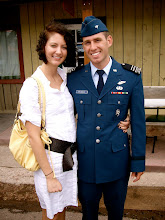
Air Waitresses through the years...
The world of flight attendants has also changed significantly since the beginning of commercial air travel. The first airliners were actually mail planes with a few extra spaces for passengers. On these flights, you had to take care of yourself: The plane crew included only pilots, and they were so busy flying the plane that they didn't have time to attend to passengers.
Eventually, some early airlines added cabin boys to their flights. These crew members, who were usually teenagers or small men, were mainly on board to load luggage, reassure nervous passengers and help people get around the plane. In 1930, a young nurse named Ellen Church, along with Steve Stimpson of Boeing Air Transport, came up with a new sort of attendant. Church proposed that registered nurses would make an ideal addition to the flight crew, as they could take care of any passengers that got sick. Boeing, then an airline as well as a plane manufacturer, hired eight nurses for a three-month trial run. The new attendants, who would come to be called "stewardesses," soon became an integral part of the airline industry. In time, these attendants were no longer required to have a nursing degree, but the nurturing, maternal character remained a key element in the profession.
Until relatively recently, airline stewardesses were under strict control. They were not allowed to be married -- ostensibly because husbands would complain that the long hours kept their wives away from home -- and most airlines had certain constraints on their height, weight and proportions. Their clothing was similarly restrictive: At most airlines, stewardesses wore form-fitting uniforms and were required to wear white gloves and high heels throughout most of the flight. While it was a perfectly respectable occupation for young women, early stewardesses were generally underpaid, had minimal benefits and were in a subservient role to pilots.
During the 1960s, '70s and '80s, flight-attendant unions, as well as representatives from the equal rights movement, brought about sweeping changes in the airline industry that addressed these problems. Since the 1970s, the policy of the major airlines has been to hire both men and women as attendants and to have no restrictions on size and weight. Flight attendants now share many of the same benefits as pilots, and airlines recognize them as a crucial component of the air-travel industry. After all, to most passengers, the flight attendant is the face of the entire airline.
This information gathered from: http://travel.howstuffworks.com/airline-crew3.htm

No comments:
Post a Comment